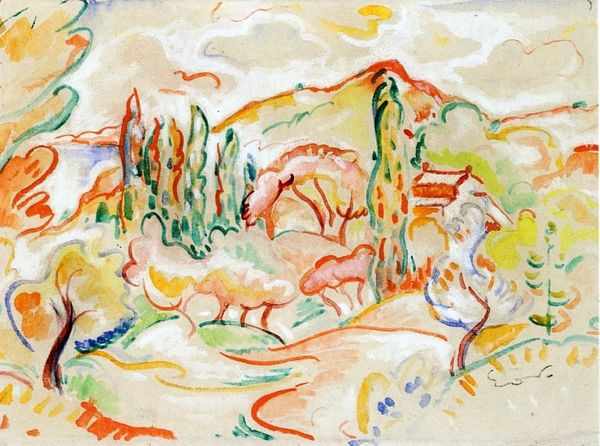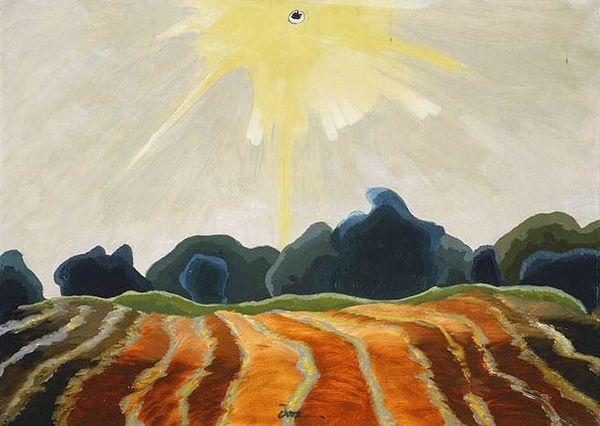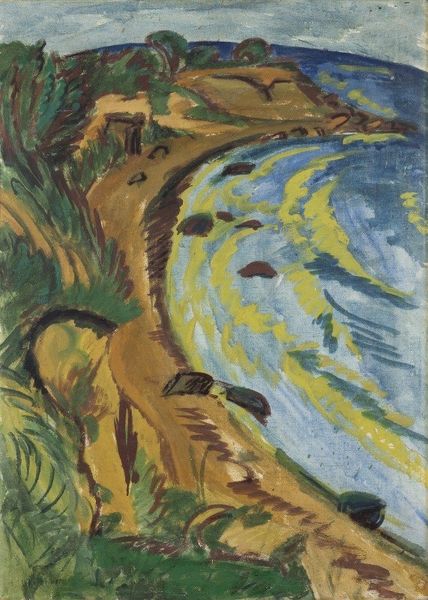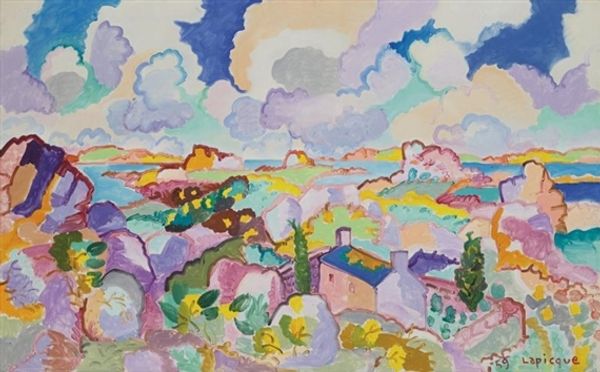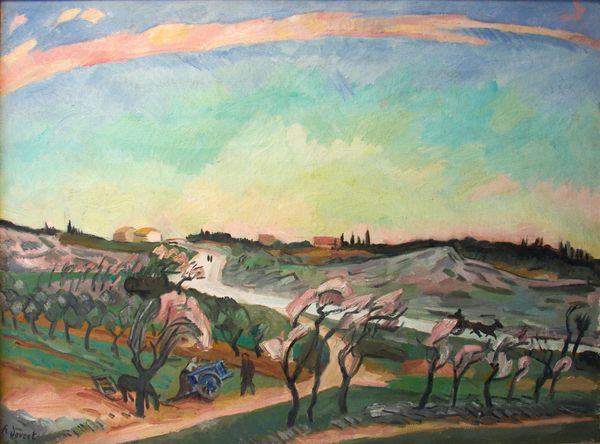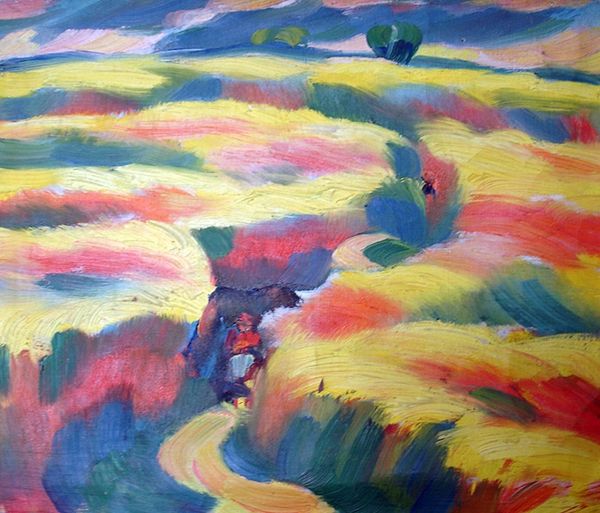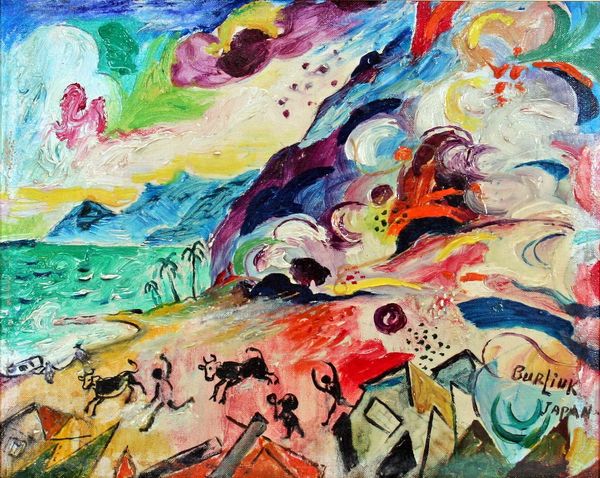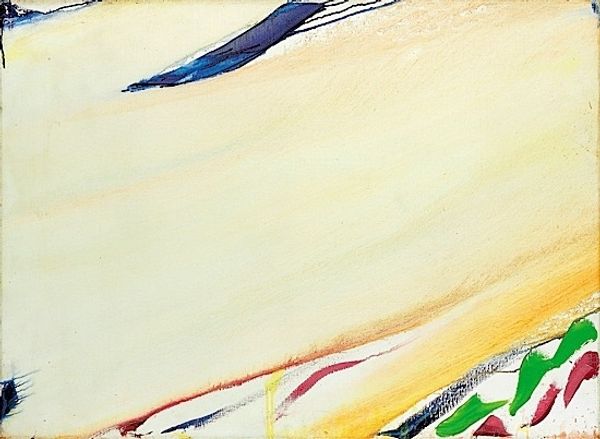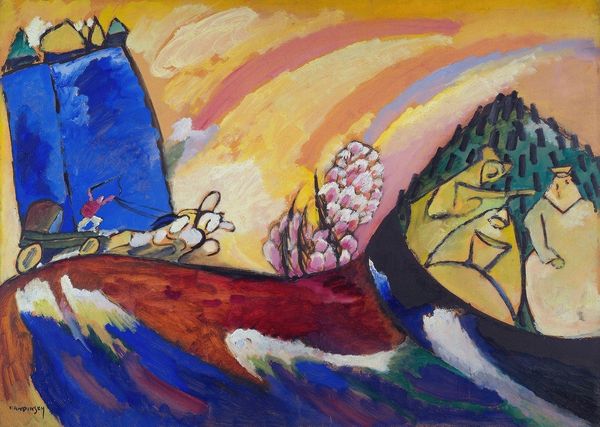
Copyright: Charles E. Burchfield,Fair Use
Editor: Today we're looking at Charles Burchfield's "Wind Blown Asters," a watercolor painting from 1951. I find the stylized representation of nature really striking; it's like he's not just depicting a landscape, but also conveying a feeling, a certain energy. How do you interpret this work? Curator: Burchfield's intense connection to the natural world definitely comes through. He saw nature as a conduit for spiritual and emotional experience. Paintings like these were made as Modernism sought out nature as a realm of experience unavailable in our modern world. He wasn't simply depicting the literal appearance of wind-blown asters; he was imbuing them with a symbolic power. How does that make you feel, looking at it that way? Editor: It definitely makes me think about how we project our feelings onto nature, using it as a mirror. The plants almost seem alive, maybe even sentient. Curator: Precisely! And think about the context of 1951. Post-war America, a time of burgeoning industrialization and a growing disconnect from rural life for many. Burchfield's work can be seen as a yearning for a more primal connection, a reaction against the increasingly mechanized world. Museums also began displaying works celebrating nature to soothe the social impact of new disruptive technologies. Do you feel any sense of unease mixed with beauty in the work? Editor: Yes, especially with the stormy sky and those almost eerie 'eyes' amongst the flowers. It's not a purely romantic view of nature, is it? Curator: Not at all. It acknowledges nature's power, its potential for disruption and even danger. This wasn’t merely aesthetic. Artists are signaling something significant and often overlooked or pushed to the margins. But without the socio-political background and institutionalization we miss these valuable connections and commentaries. Editor: This painting becomes a fascinating commentary on society and our relationship with the environment, I hadn't considered the cultural context. Thanks for your insights! Curator: It's crucial to consider not only the image but its place in history; art becomes a lens through which to view and understand ourselves.
Comments
No comments
Be the first to comment and join the conversation on the ultimate creative platform.
